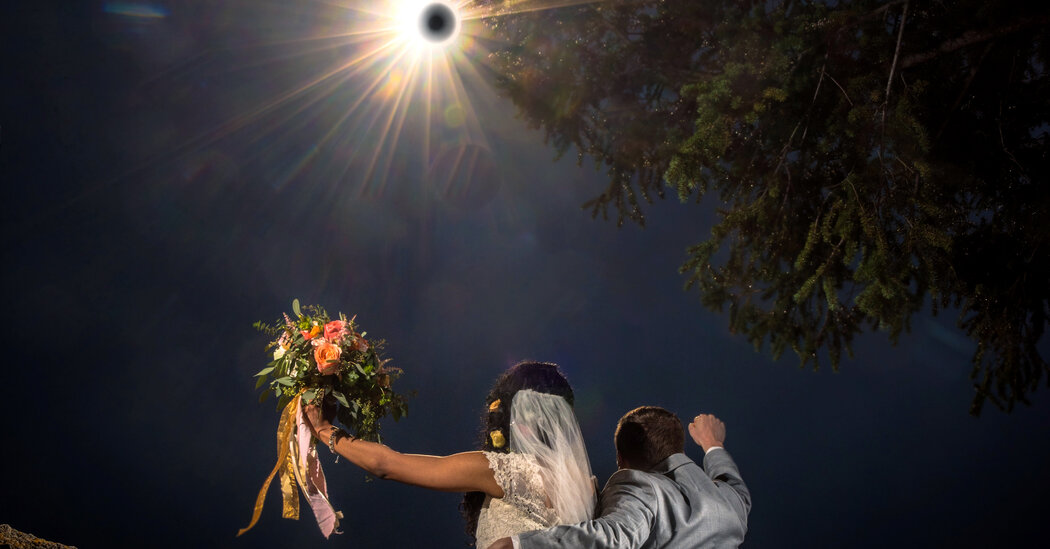
When Zach Horrall, a social media specialist at the Indianapolis Motor Speedway, and Corlan McCollum, a children’s librarian, got engaged two years ago, they wanted to connect their wedding to a larger event. At first, they considered Halloween, but when they realized Indianapolis was in the path of totality for the April 8, 2024, solar eclipse, they changed course.
The two are planning an outdoor wedding, with the ceremony timed to the approximately three minutes and 45 seconds of totality in the Indianapolis region. They hope their 75 guests will pay more attention to the eclipse than to them.
“It takes a little bit of the pressure off, because you’re also bringing people to experience the eclipse,” Mr. Horrall, 27, said. “They’re not just solely focused on you.”
Tying their wedding “to something like this makes it a bigger deal — like, yes, I will use this major celestial event for my wedding,” added Mr. McCollum, 21.
A total solar eclipse occurs when the moon passes between the sun and Earth, entirely blocking the face of the sun and darkening the sky. The April 8 eclipse travels a path beginning in Mexico before entering the United States through Texas, going through parts of the Midwest and Northeast, and then exiting through eastern Canada.
While areas outside that path may see a partial eclipse, most people planning eclipse weddings are focused on the path of totality. During this time, stars can be seen, the temperature drops and solar prominences swirl out from behind the dark disc of the moon, creating a dramatic experience, according to Bob Baer, a specialist at the Carbondale School of Physics and Applied Physics at Southern Illinois University and the co-chairman of the Southern Illinois Eclipse 2017-2024 Steering Committee.






